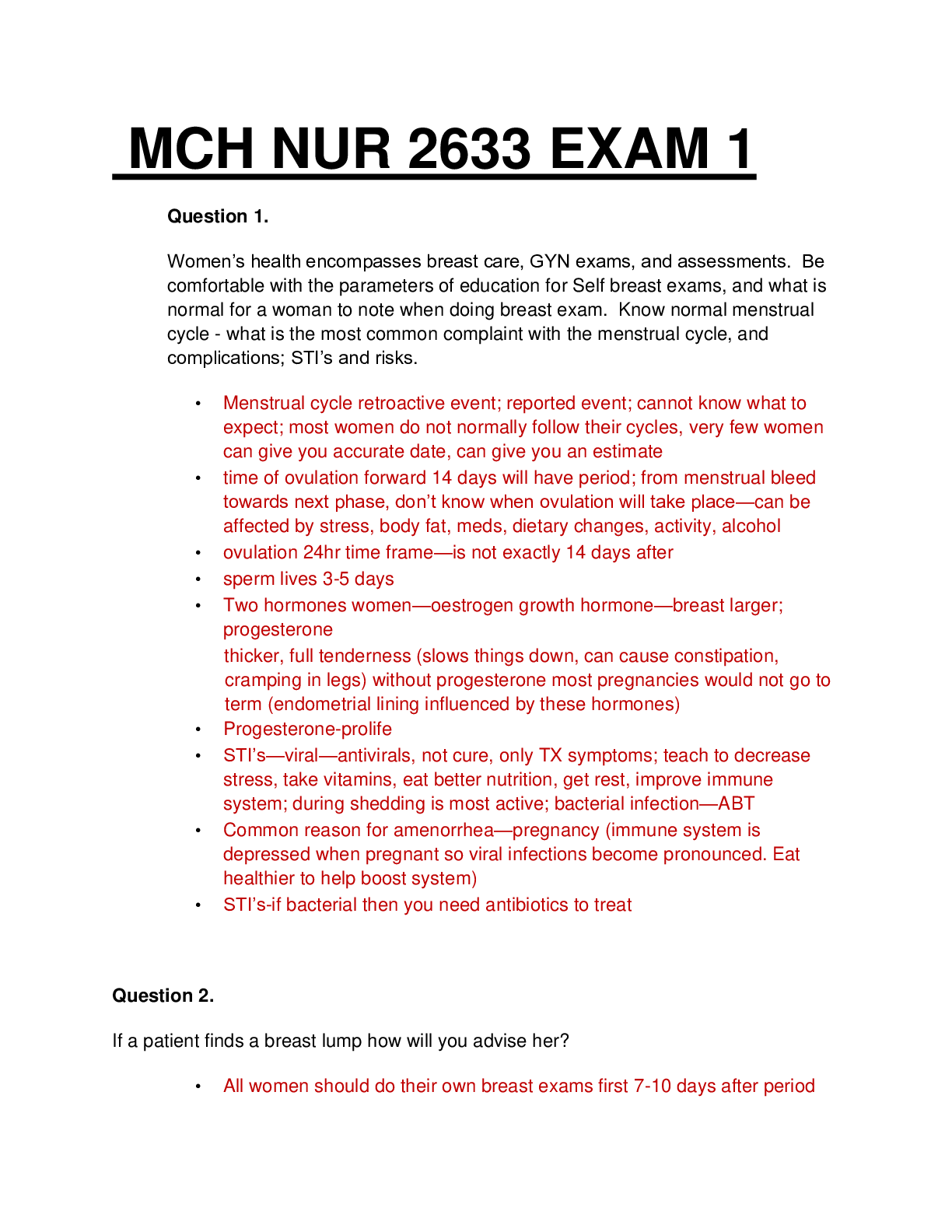Health Care > EXAM > NR324 ADULT HEALTH EXAM 1 STUDY GUIDE (All)
NR324 ADULT HEALTH EXAM 1 STUDY GUIDE
Document Content and Description Below
1. Describe what causes fluid volume deficit, and list the clinical manifestations, nursing management, treatment, and education. HYPOVOLEMIA - Shift of fluids from plasma into interstitial fluid. ... Fluid Volume deficit is HYPOvolemia. Causes? Fever, heatstroke, Diabetes insipidus, GI losses, hemorrhage, dehydration, polyuria, burns. Clinical Manifestations: Poor skin turgor, lethargy, thirst, dry mucous membranes, decreased urine output/concentration, increased RR, orthostatic hypotension, decrease cap refill. Nursing management/assessment: VS changes = decreased BP, Increased HR, increased RR, flattened neck veins, thready pulse. Check skin turgor, skin for breakdown, daily weights, I/O’s, LOC, oxygen administration, safe administration of blood. Treatment: Increase fluids, Blood transfusion Education: Educate patient of S/S of fluid volume deficit. NANDA: Fluid imbalance, impaired cardiac output, acute confusion, potential complication: hypovolemic shock Client education- Good skin care, if orthostatic hypotension is present, teach to change positions slowly, remind patient to drink 2. Describe what causes fluid volume excess, and list the clinical manifestations, nursing management, treatment, and education. Excess intake of fluids, abnormal retention of fluids, heart failure or renal failure, or a shift of fluid from interstitial fluid into plasma fluid. Weight gain is the #1 manifestation. Fluid Volume excess is HYPERvolemia. Causes? Excessive fluid intake, abnormal retention of fluids (CHF or renal failure), SIADH, Cushing’s’. Clinical Manifestations: Increased BP, bounding pulse, edema, HA, crackles/dyspnea, weight increase, JVD, S3 heart sounds, seizures, coma. Nursing management/assessments: 24-hour I/O’s, assess cardio changes, respiratory changes, LOC, PEERLA, daily weights, and skin turgor. Treatment: Diet, fluid/sodium restriction, fluids, diuretics Types of diuretics>> 1. Loop diuretics – Furosemide (Lasix) 2. Thiazides – Hydrochlorothiazide 3. Potassium sparing – Spiro lactone 4. Quinazoline - metolazone Educations: Loop diuretics can cause the kidneys to increase flow of urine; this helps reduce the amount of water in your body and lower your BP. Take medication in AM. Thiazides reduce the amount of sodium and water in the body; they are the only type that dilates the blood vessels, which also helps to lower BP. Potassium-sparing is used to [Show More]
Last updated: 1 year ago
Preview 1 out of 21 pages
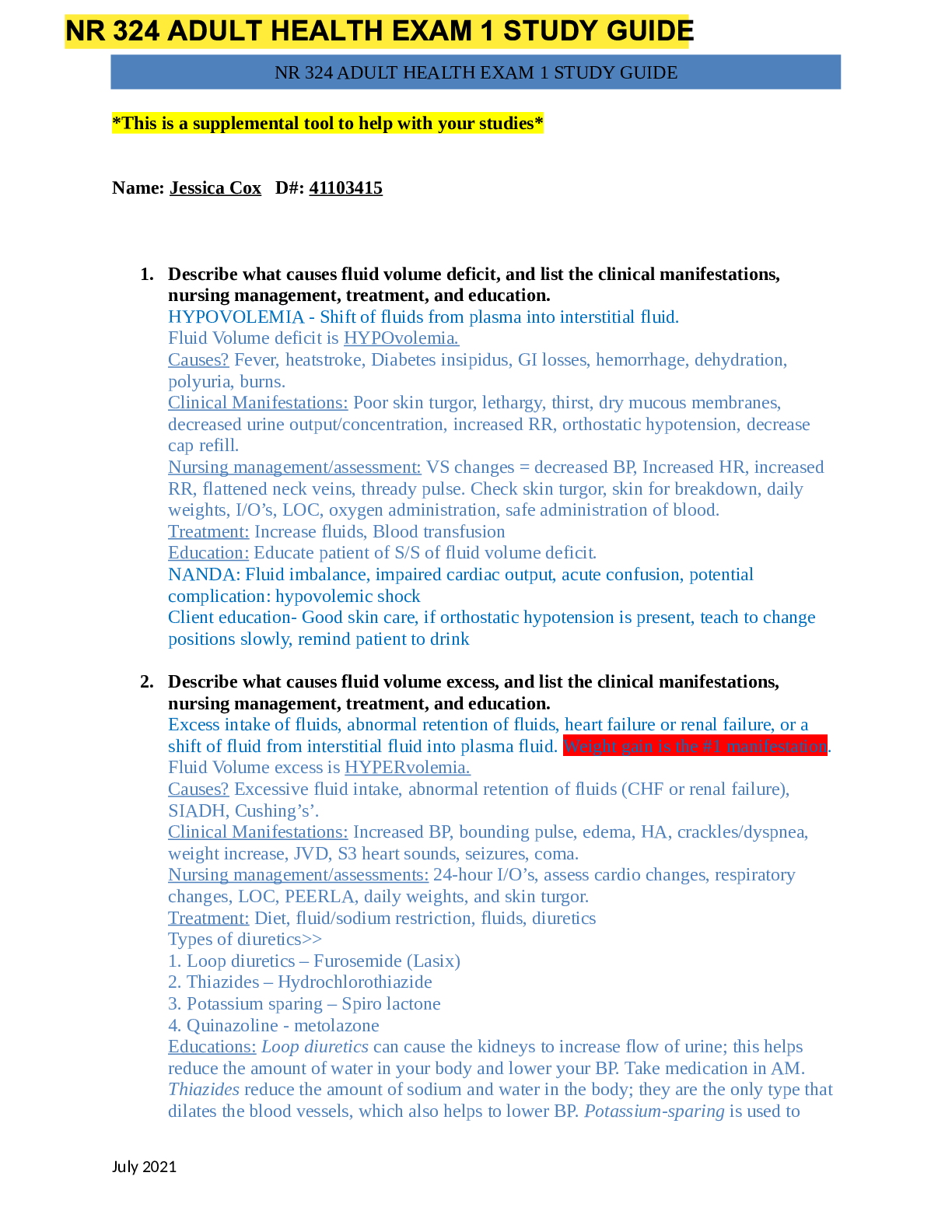
Reviews( 0 )
Document information
Connected school, study & course
About the document
Uploaded On
Nov 07, 2022
Number of pages
21
Written in
Additional information
This document has been written for:
Uploaded
Nov 07, 2022
Downloads
0
Views
39


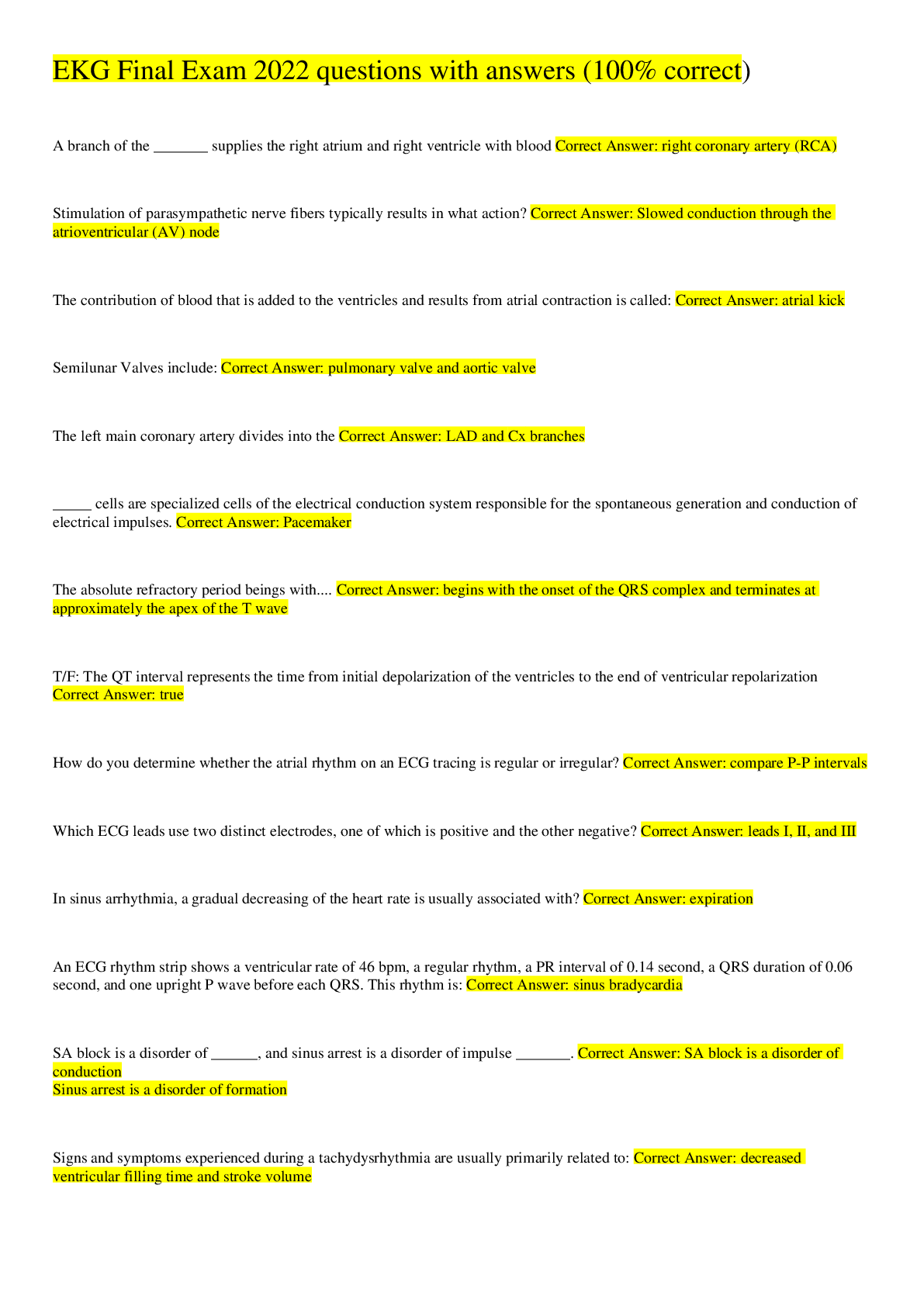
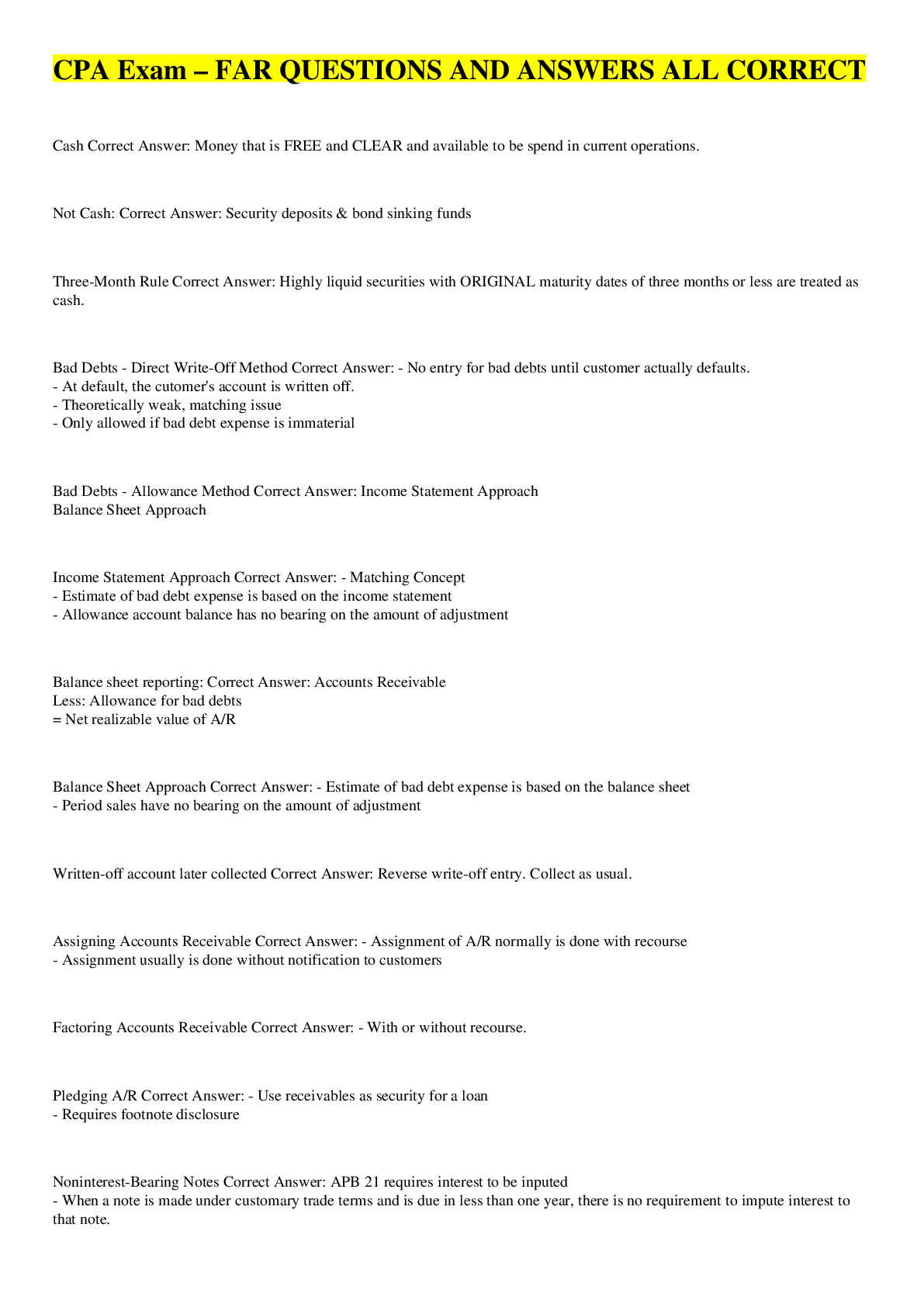
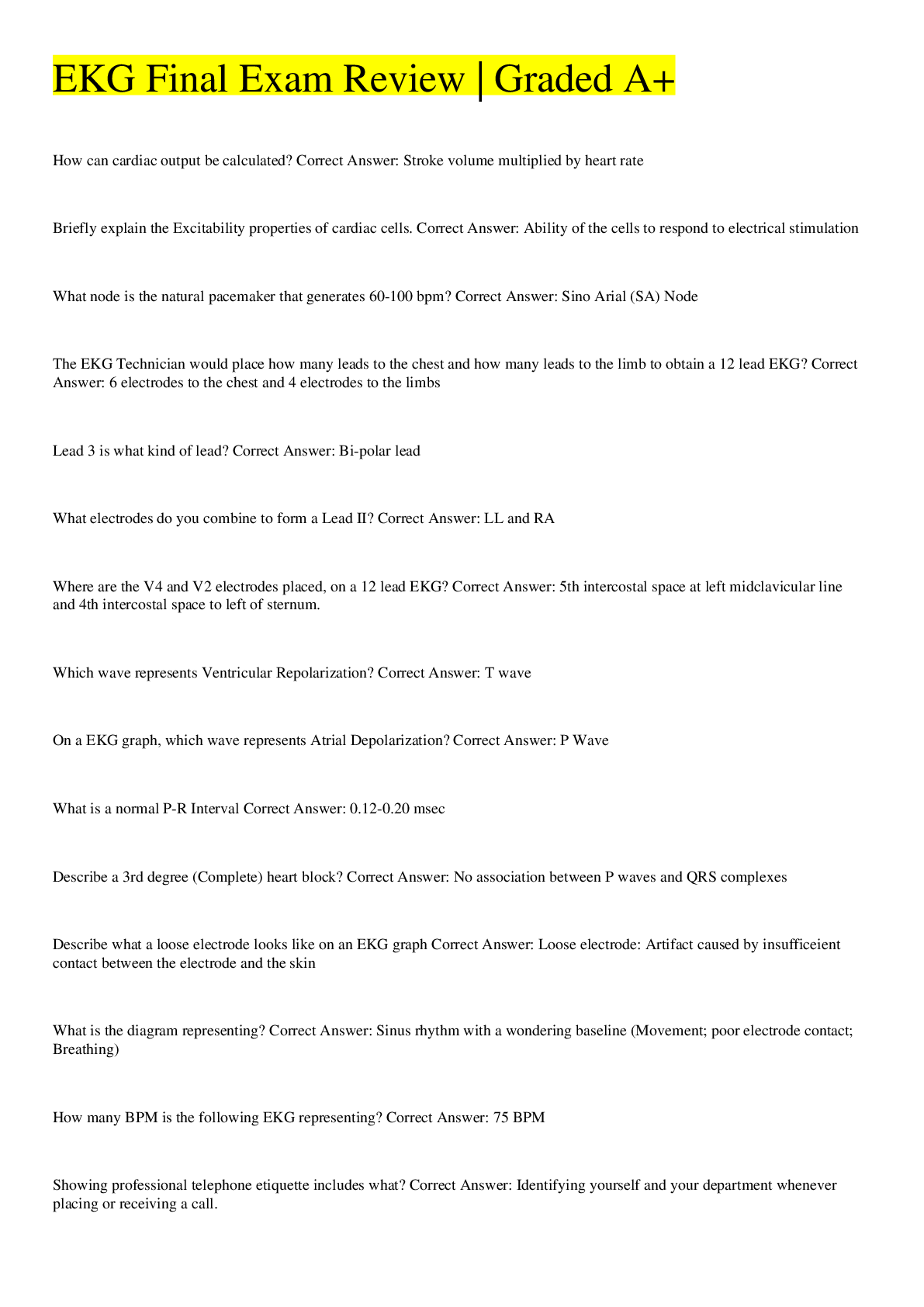
.png)

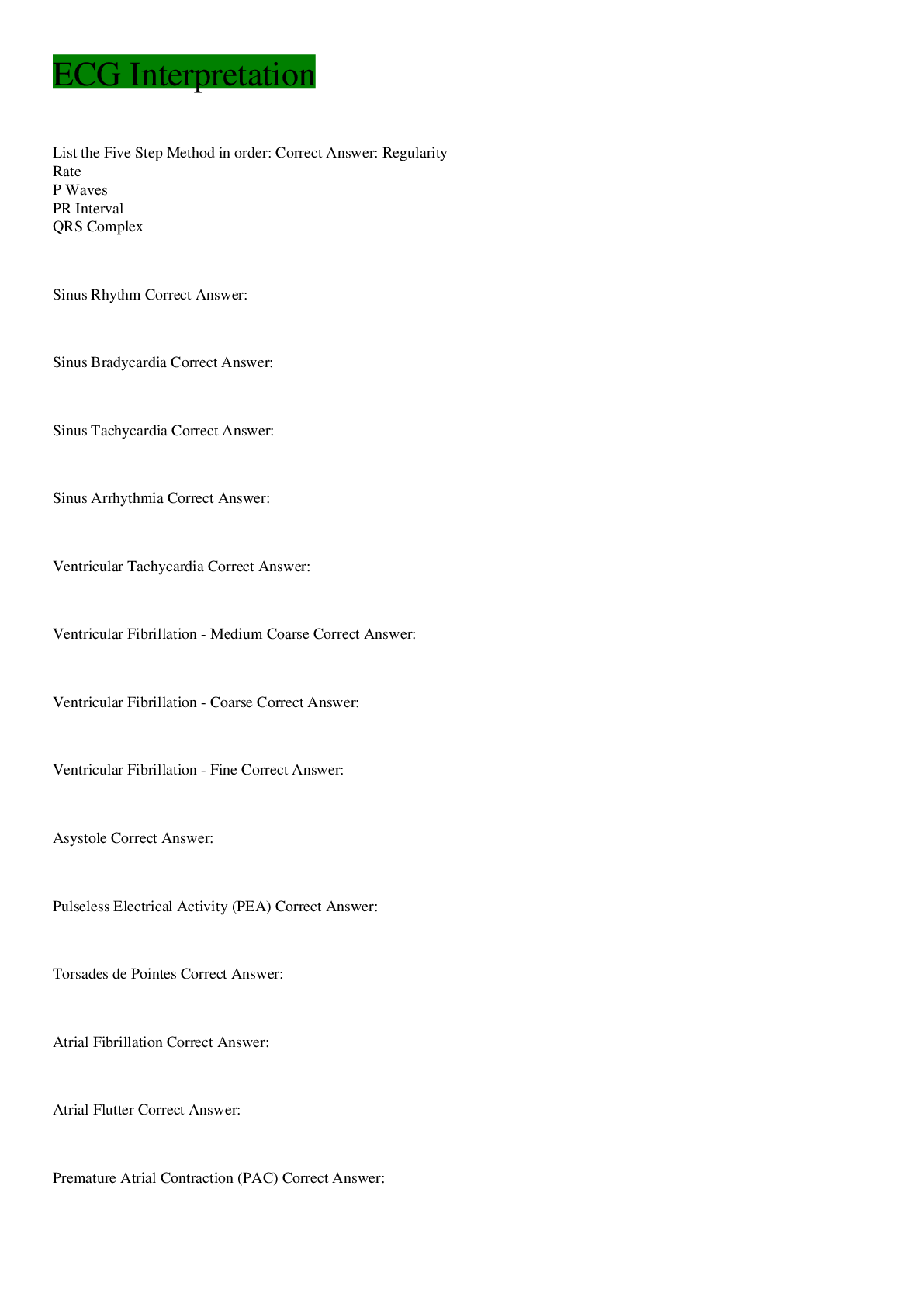


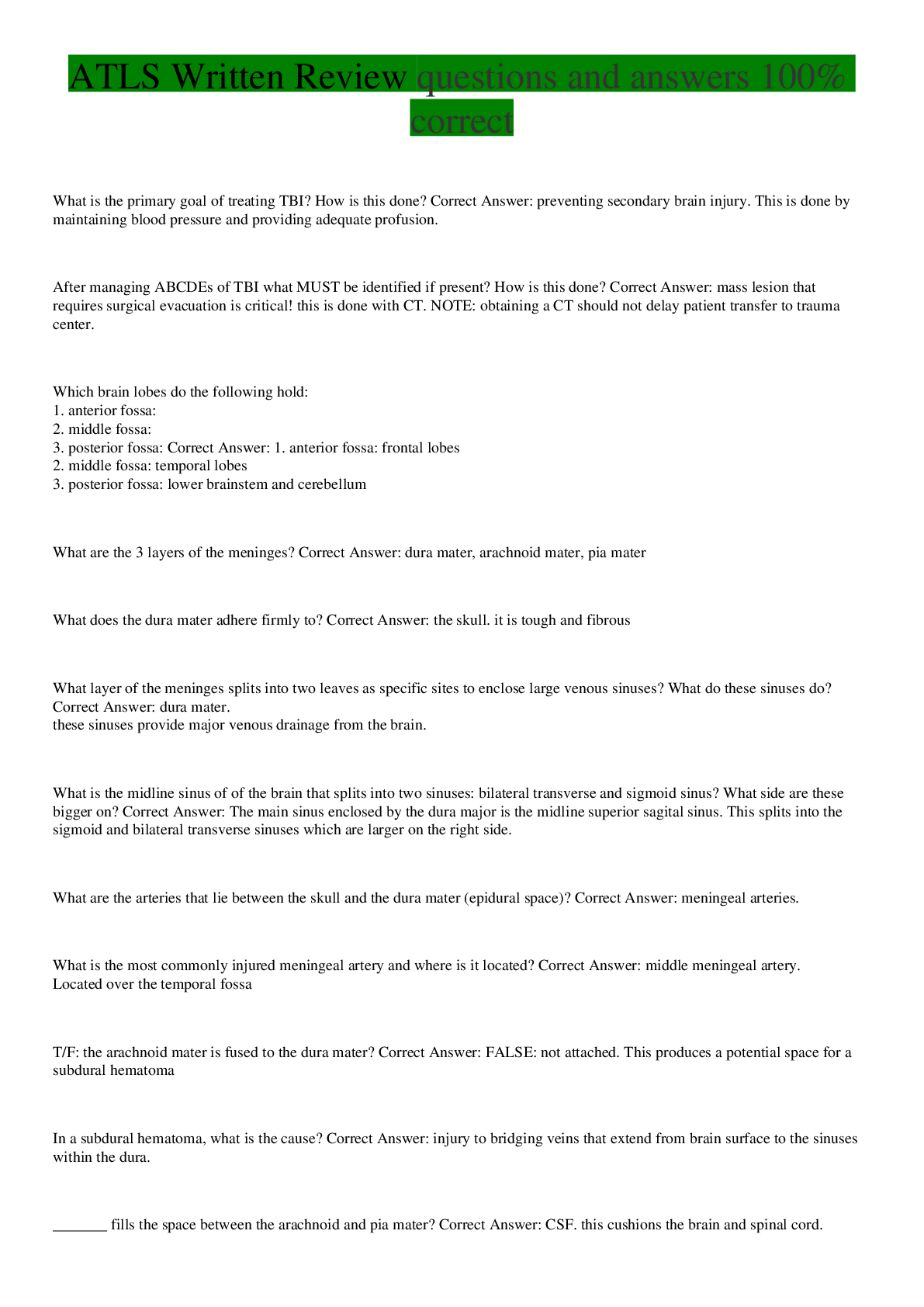
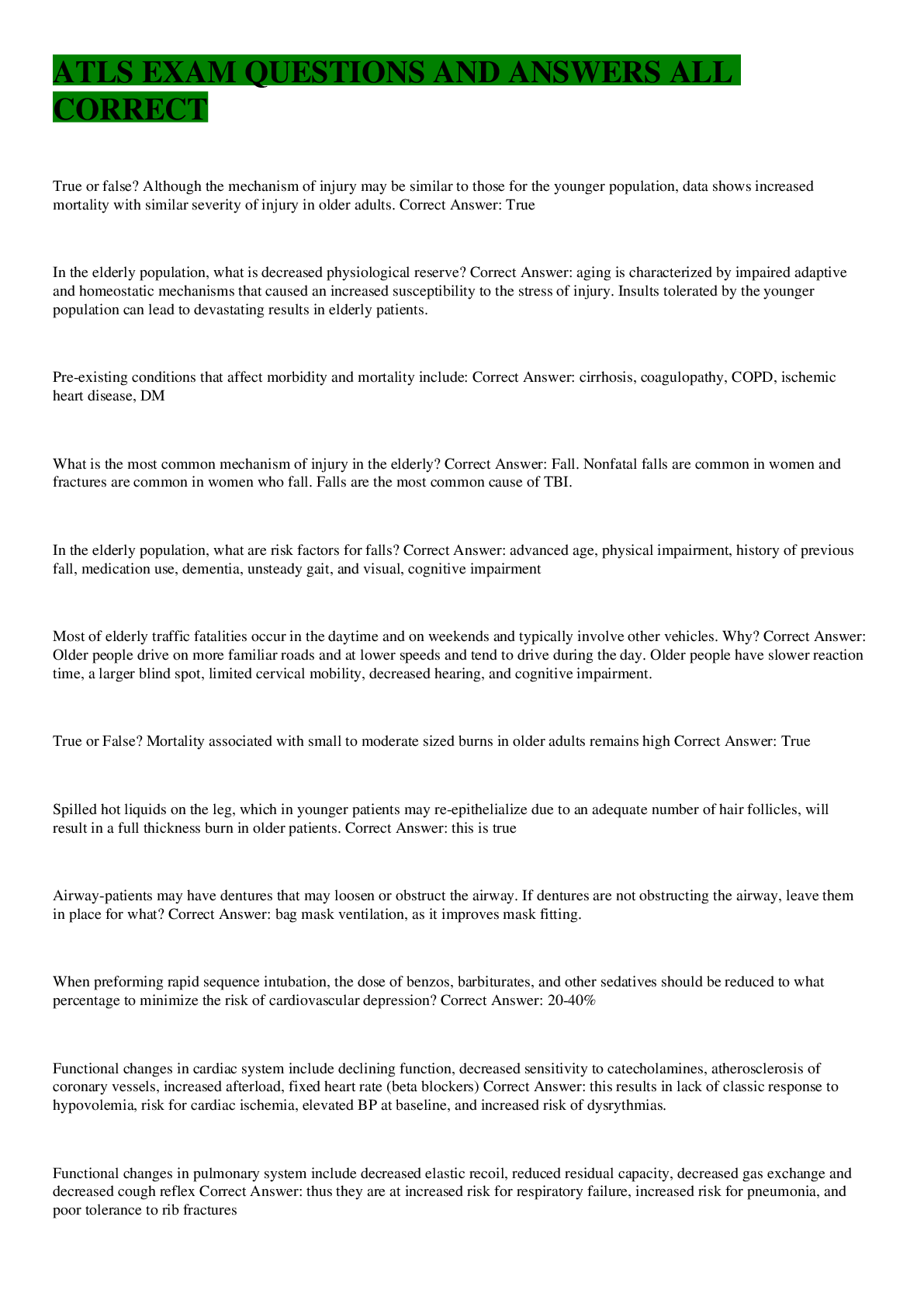


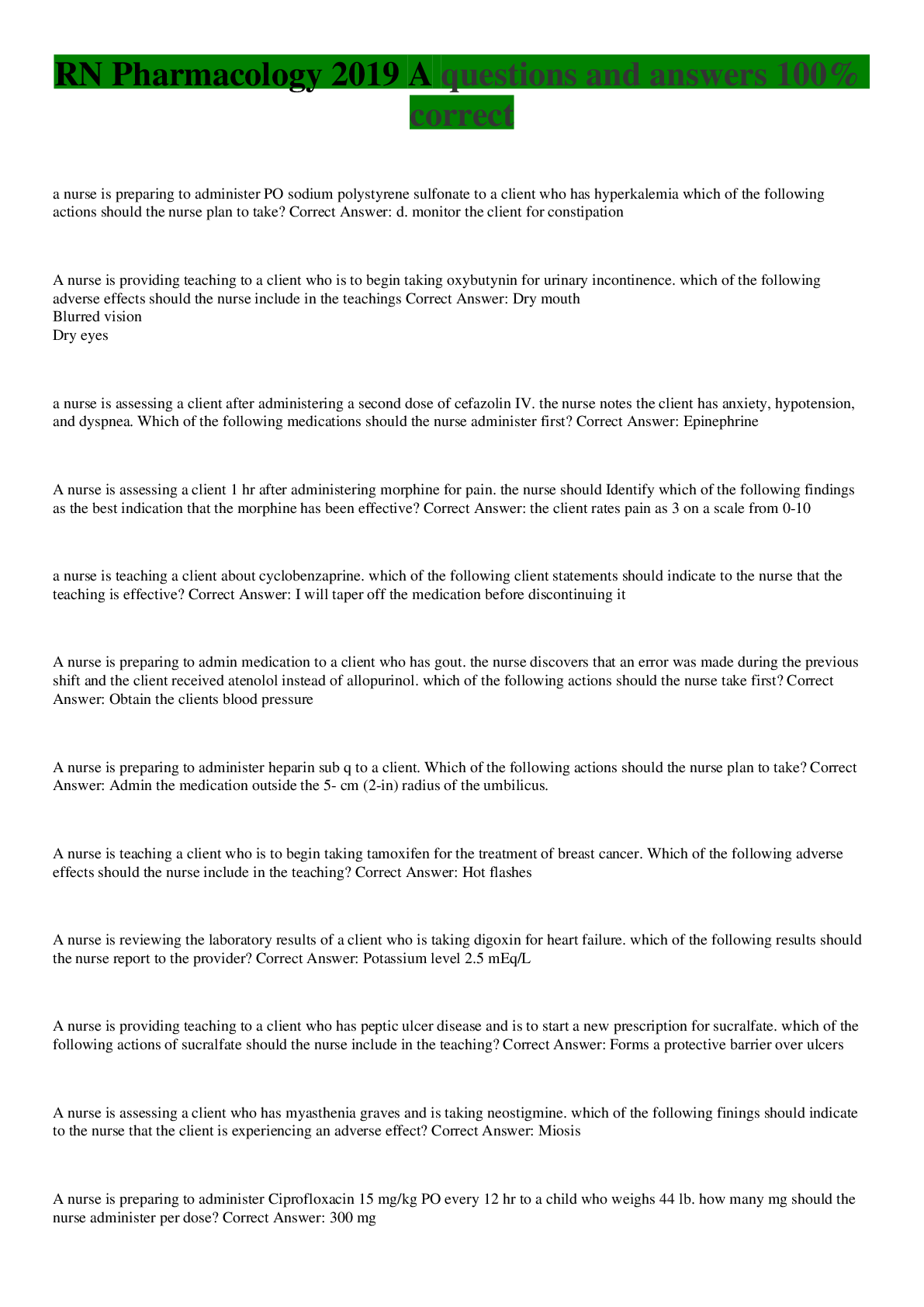
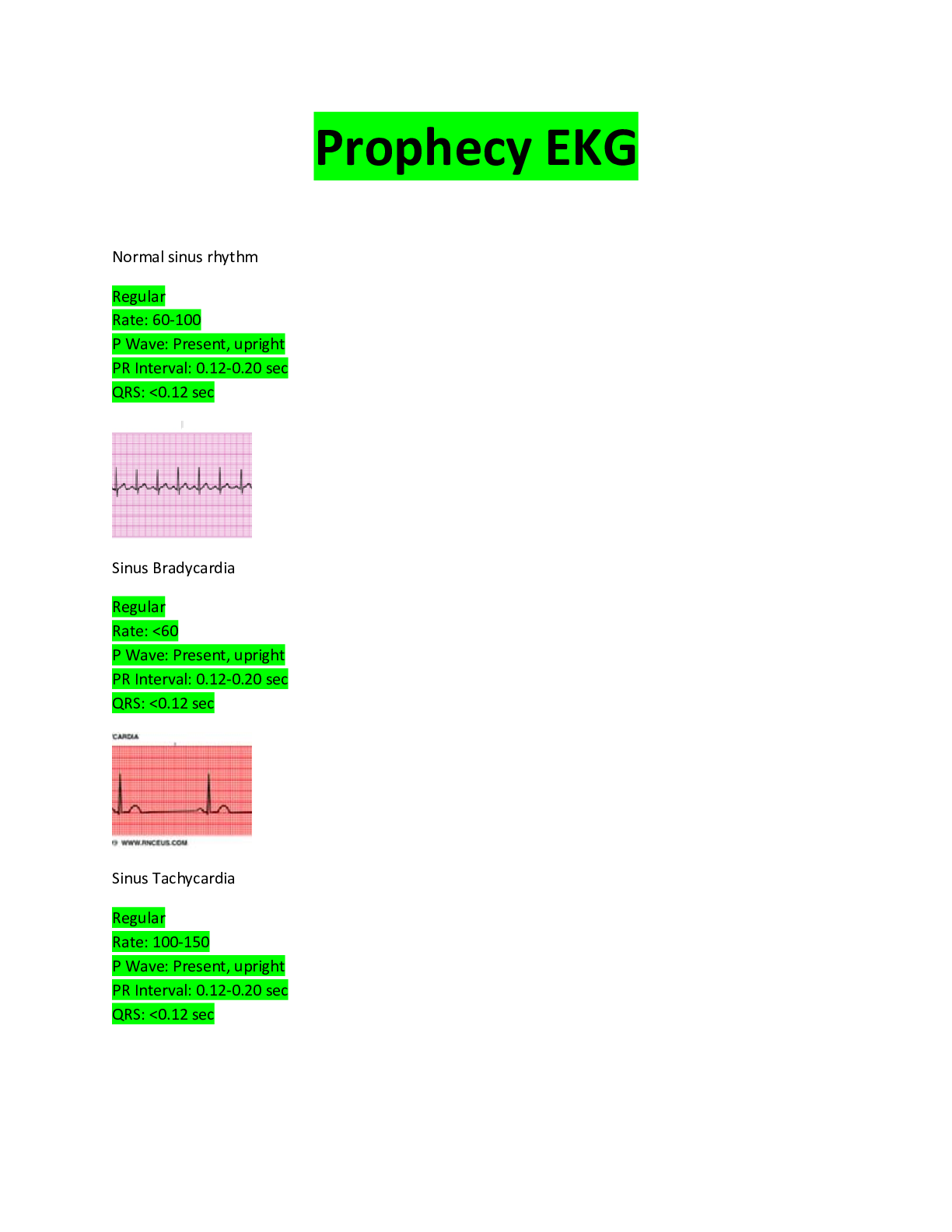
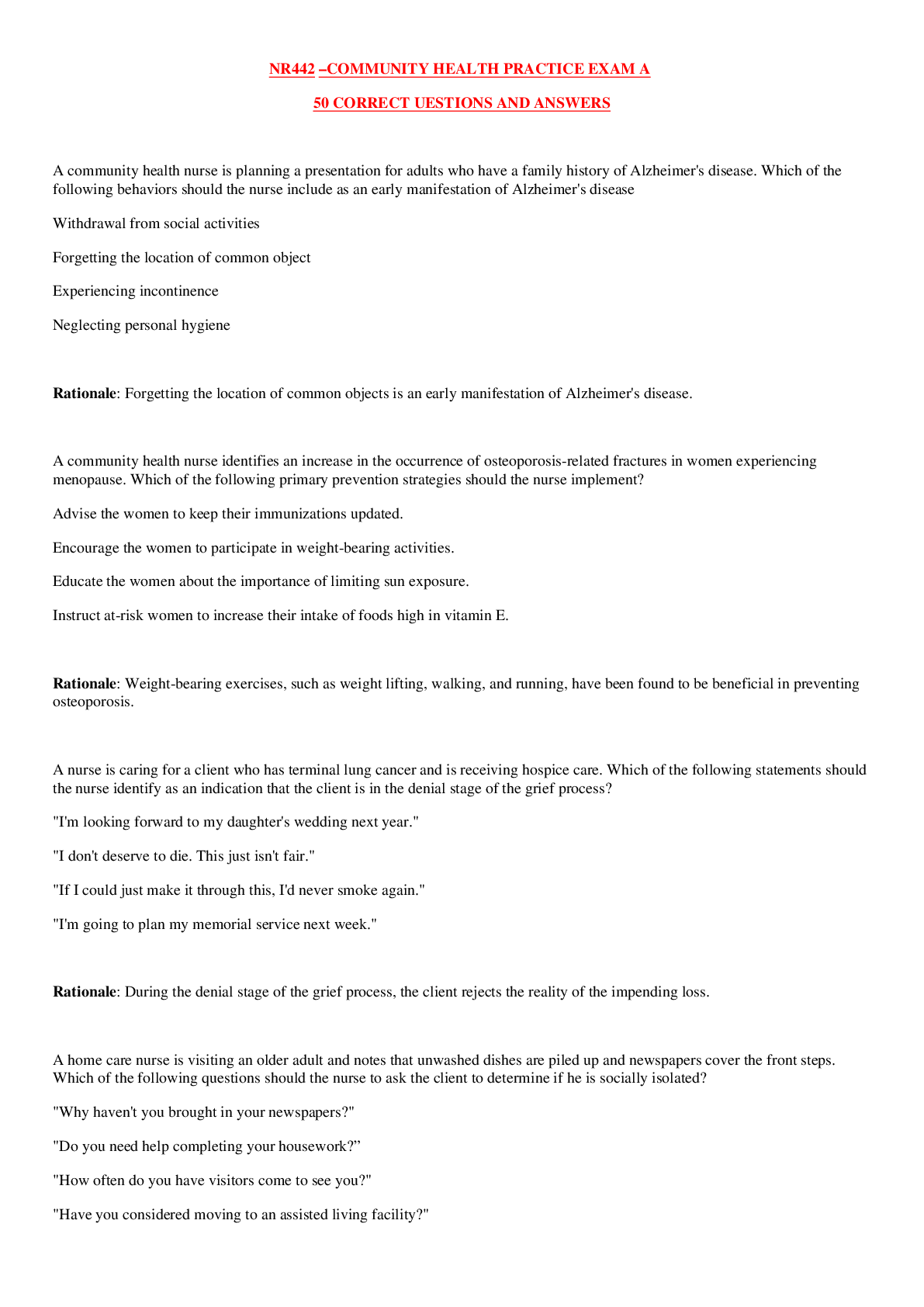
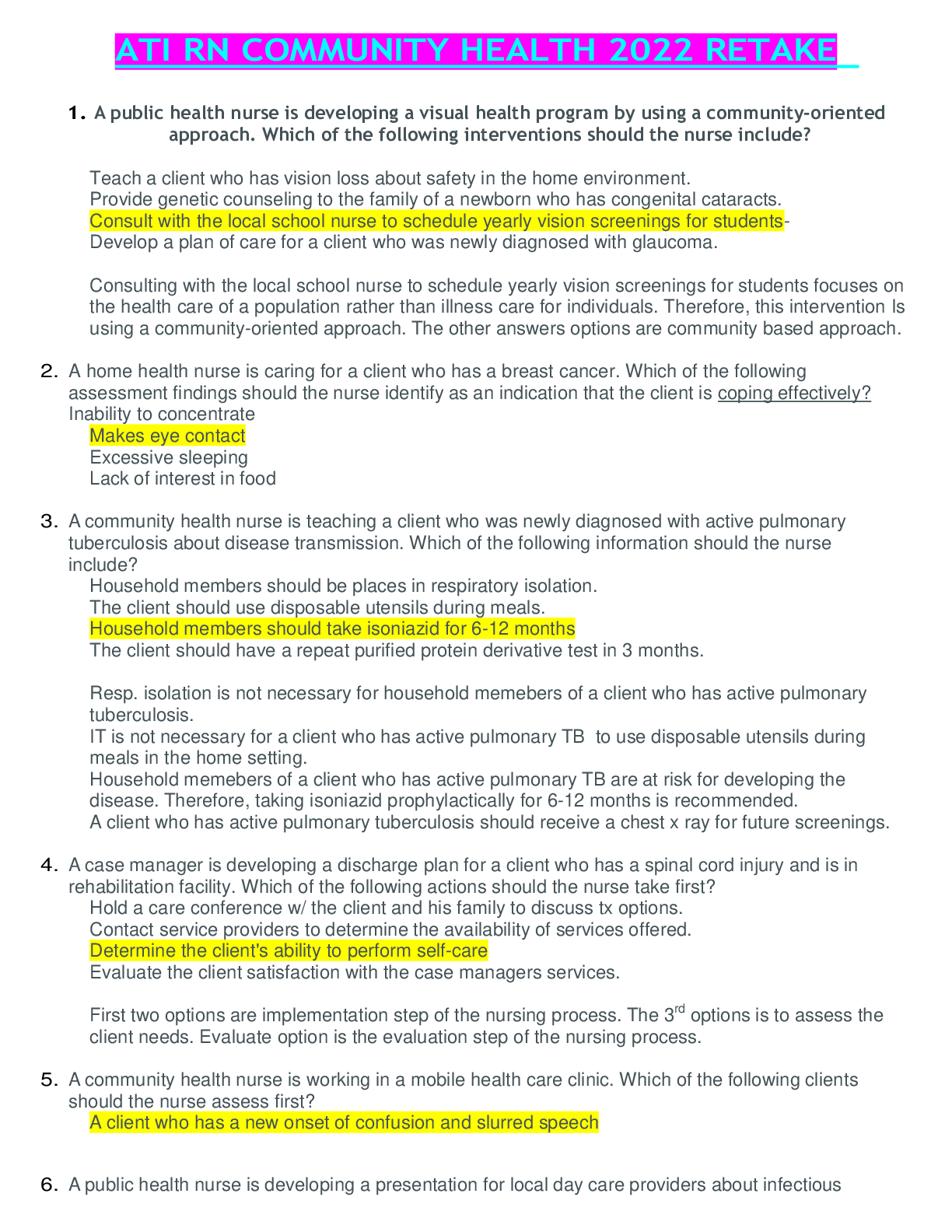

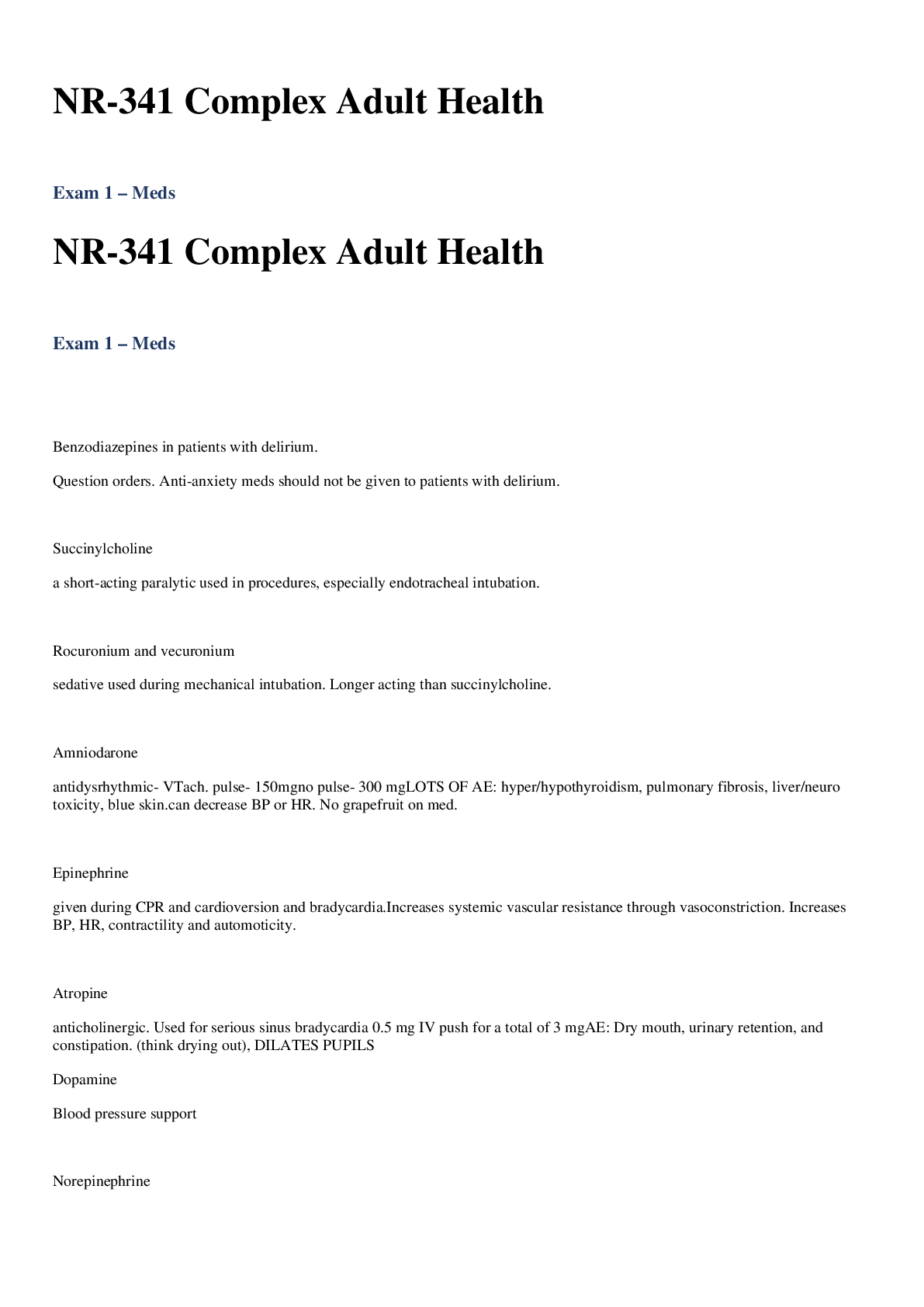

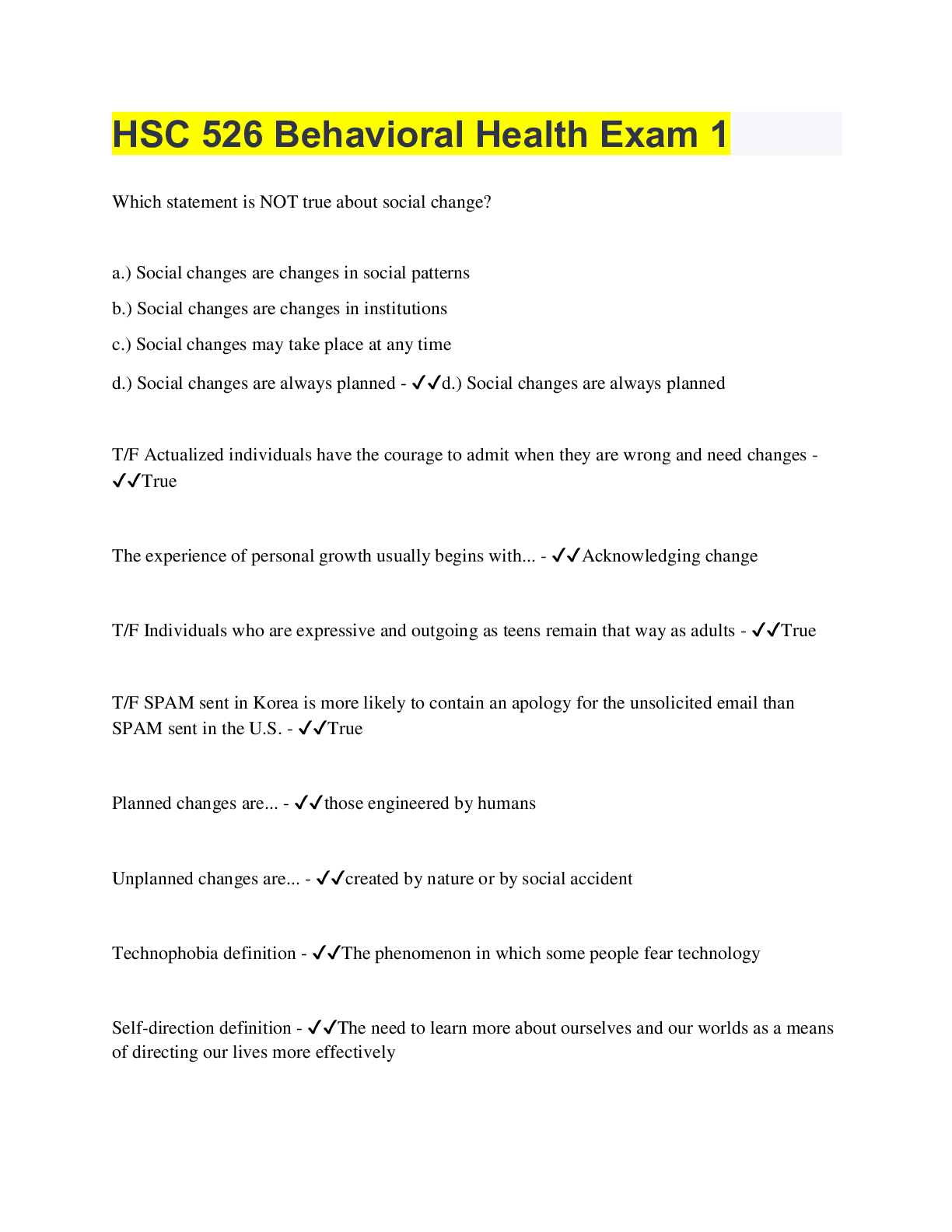
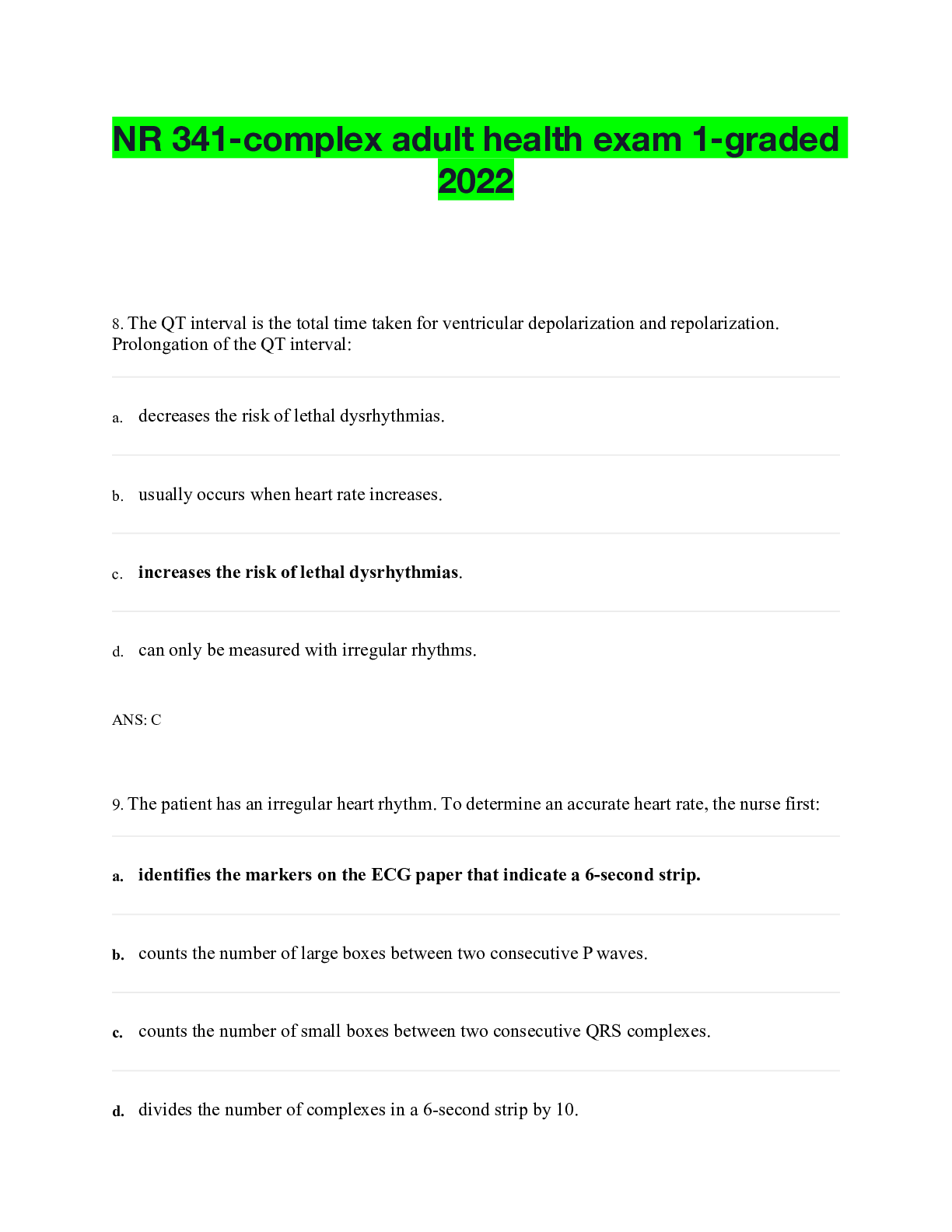
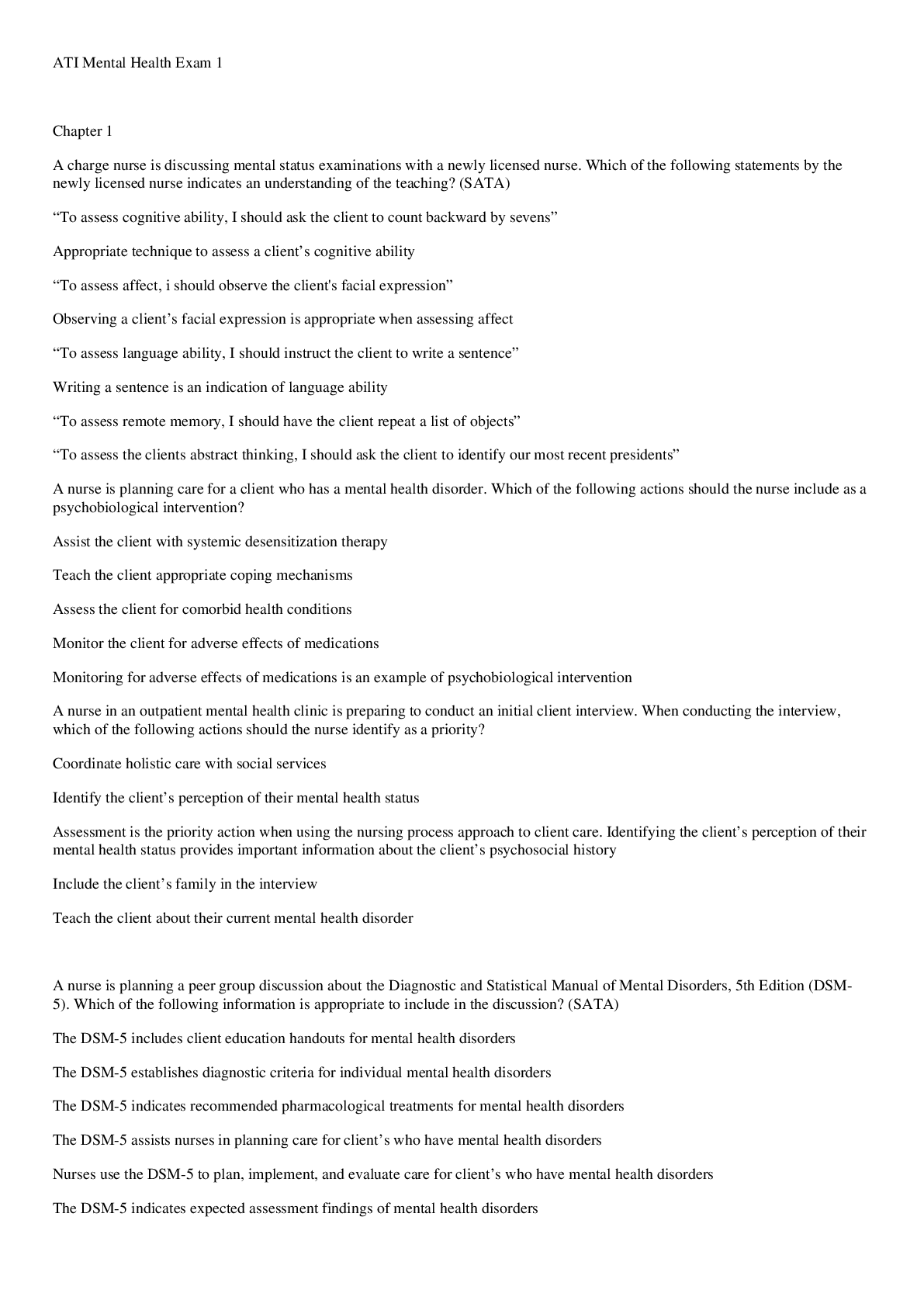

.png)
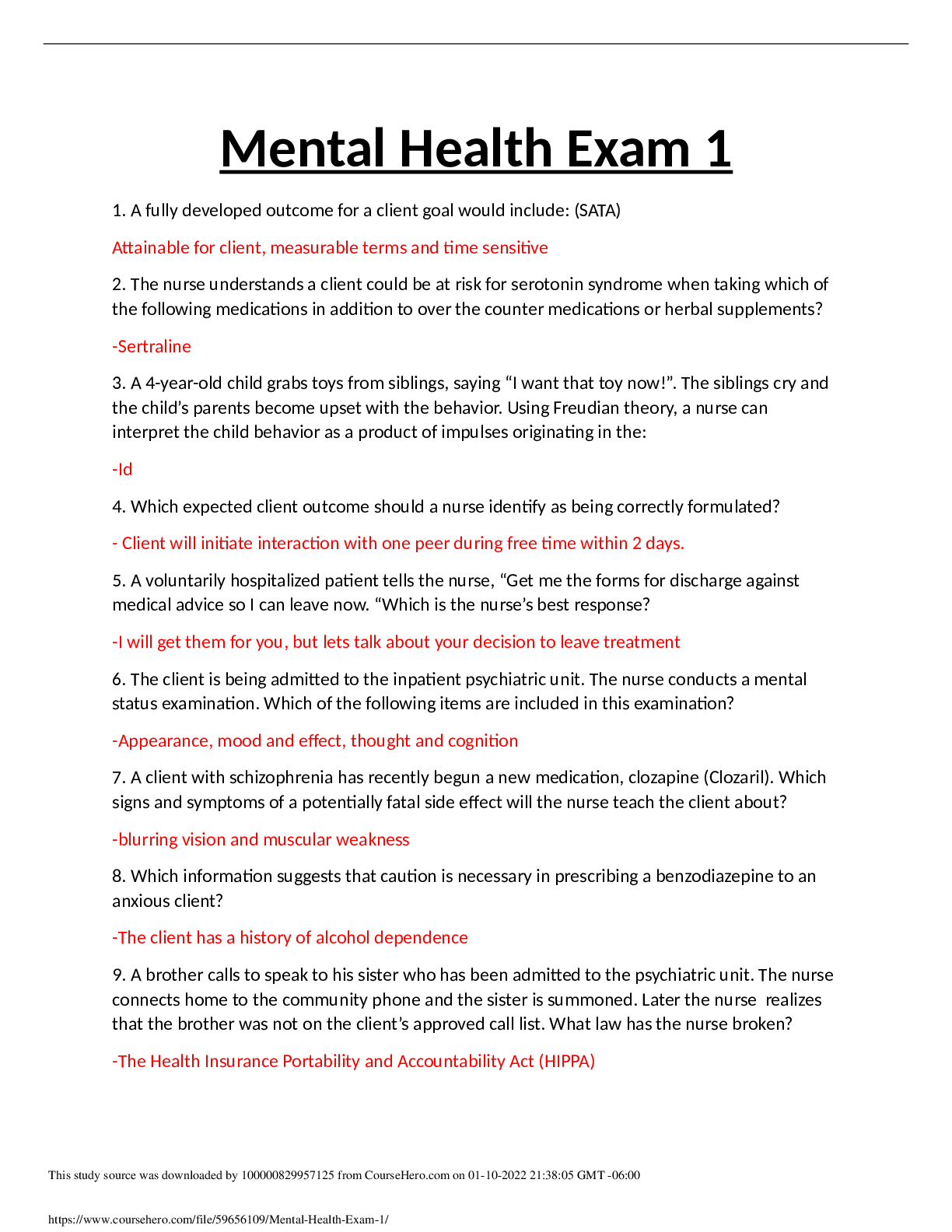
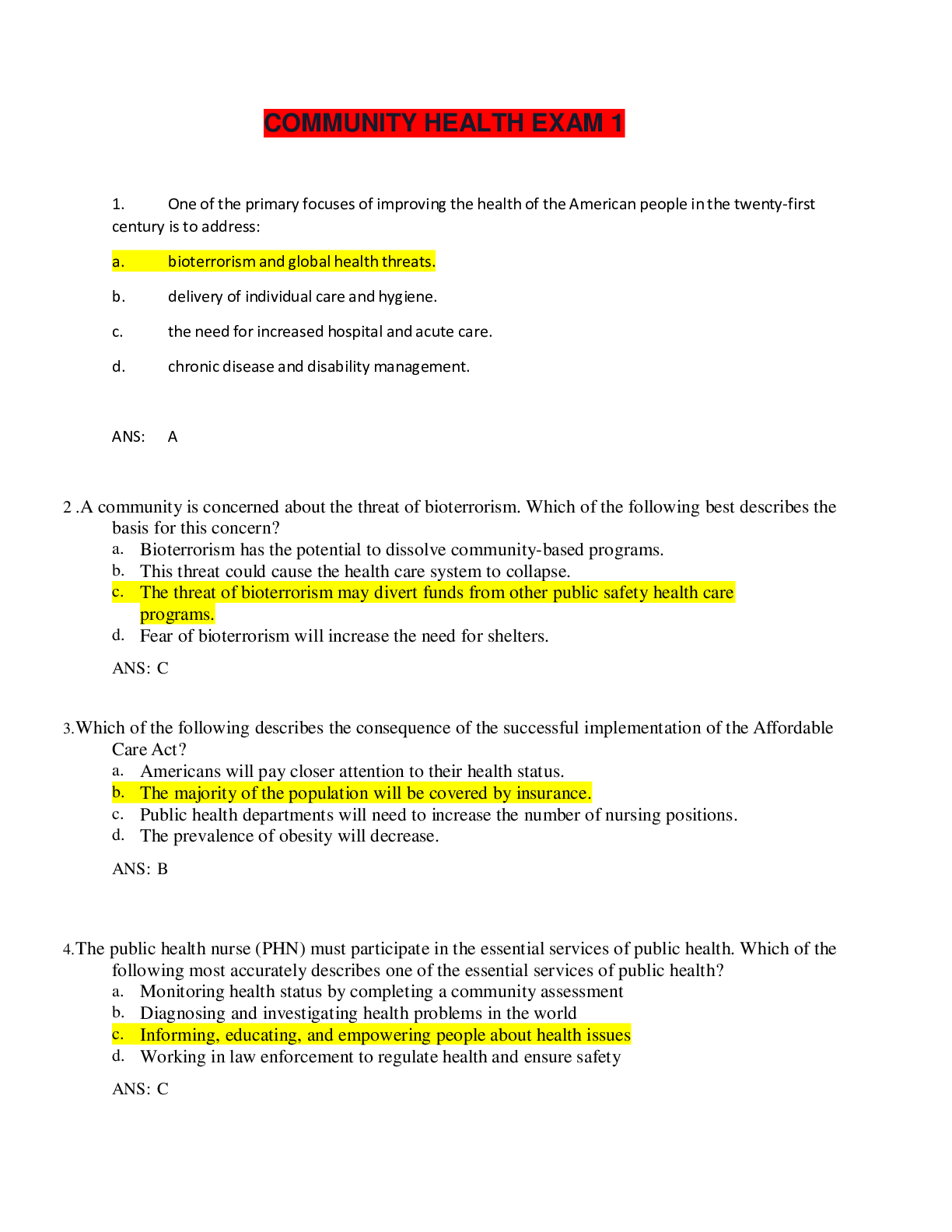
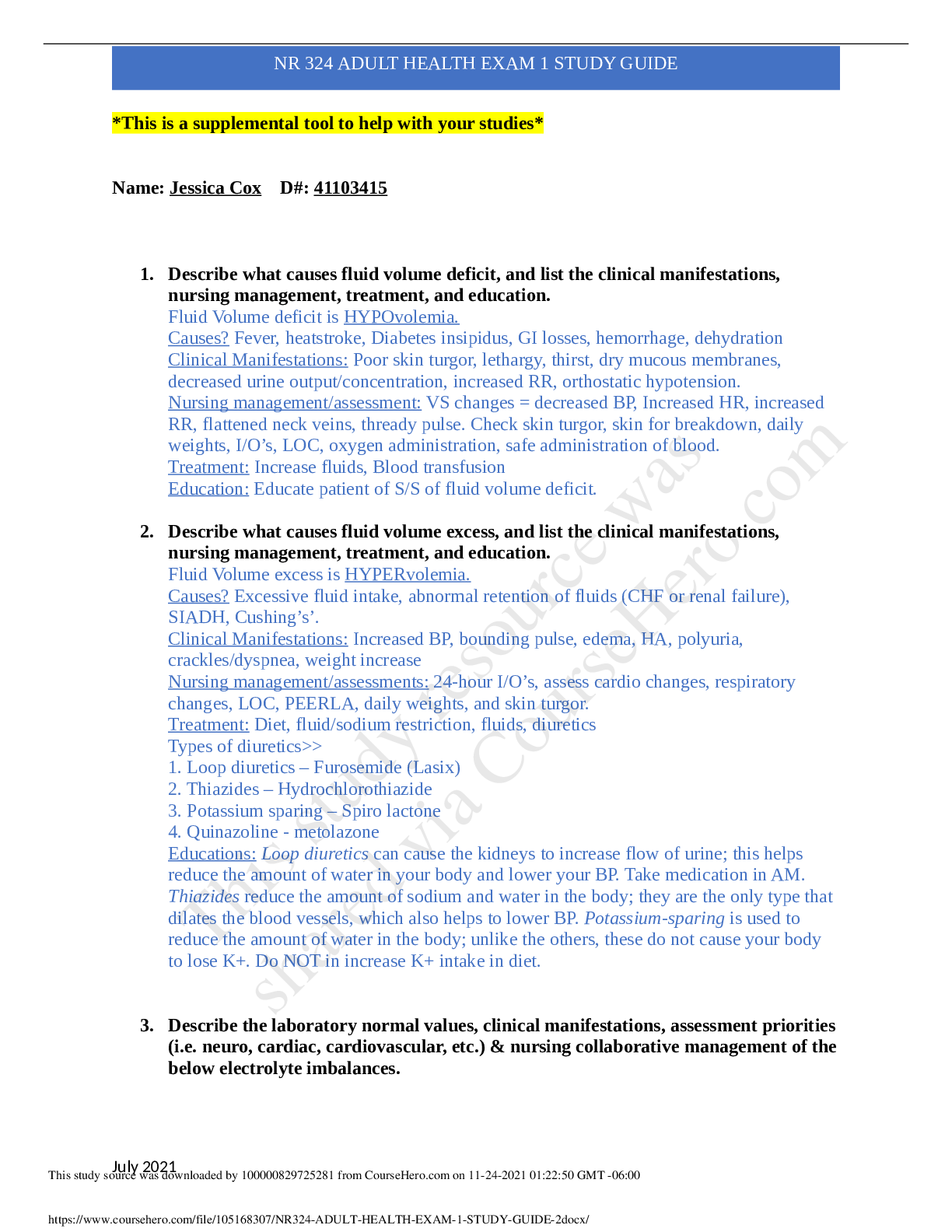
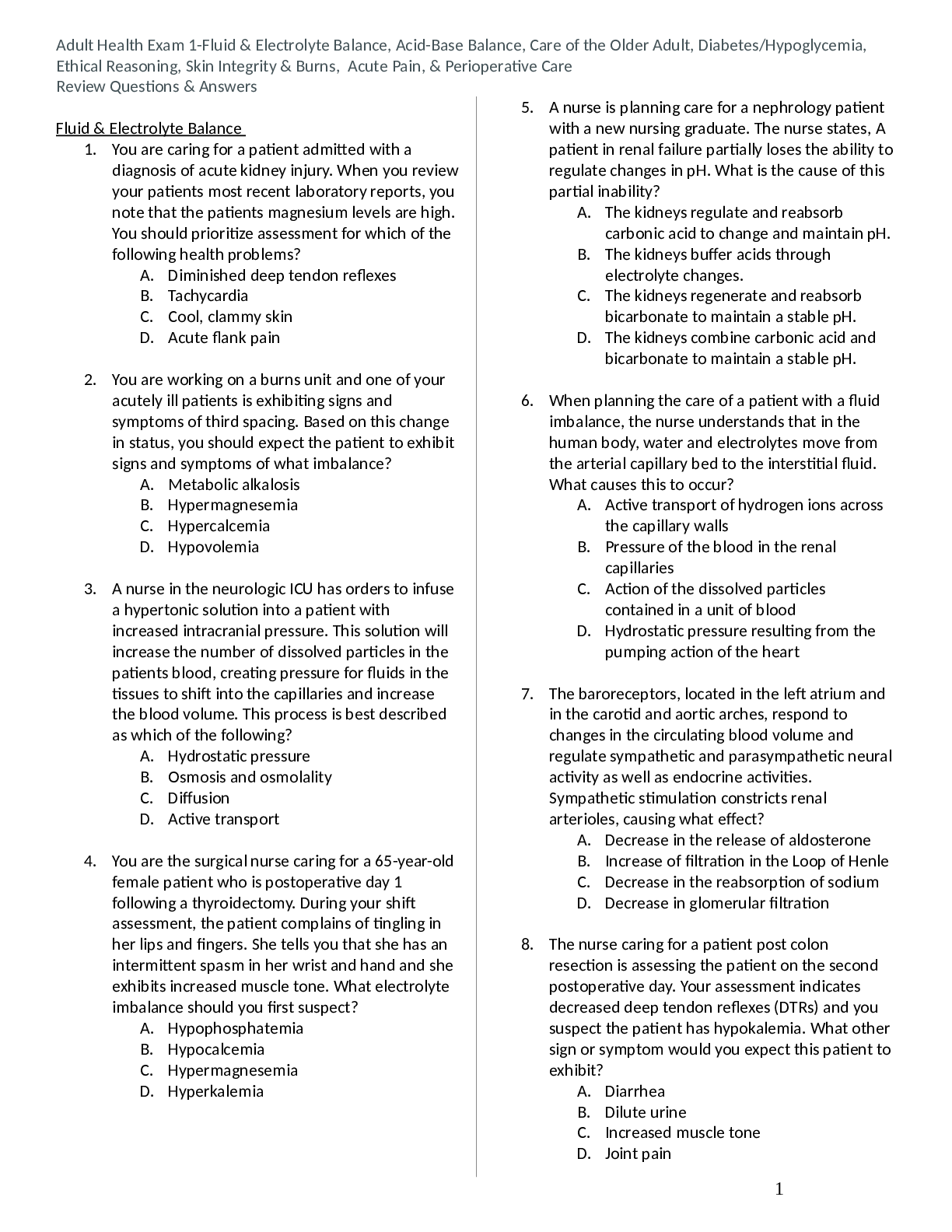
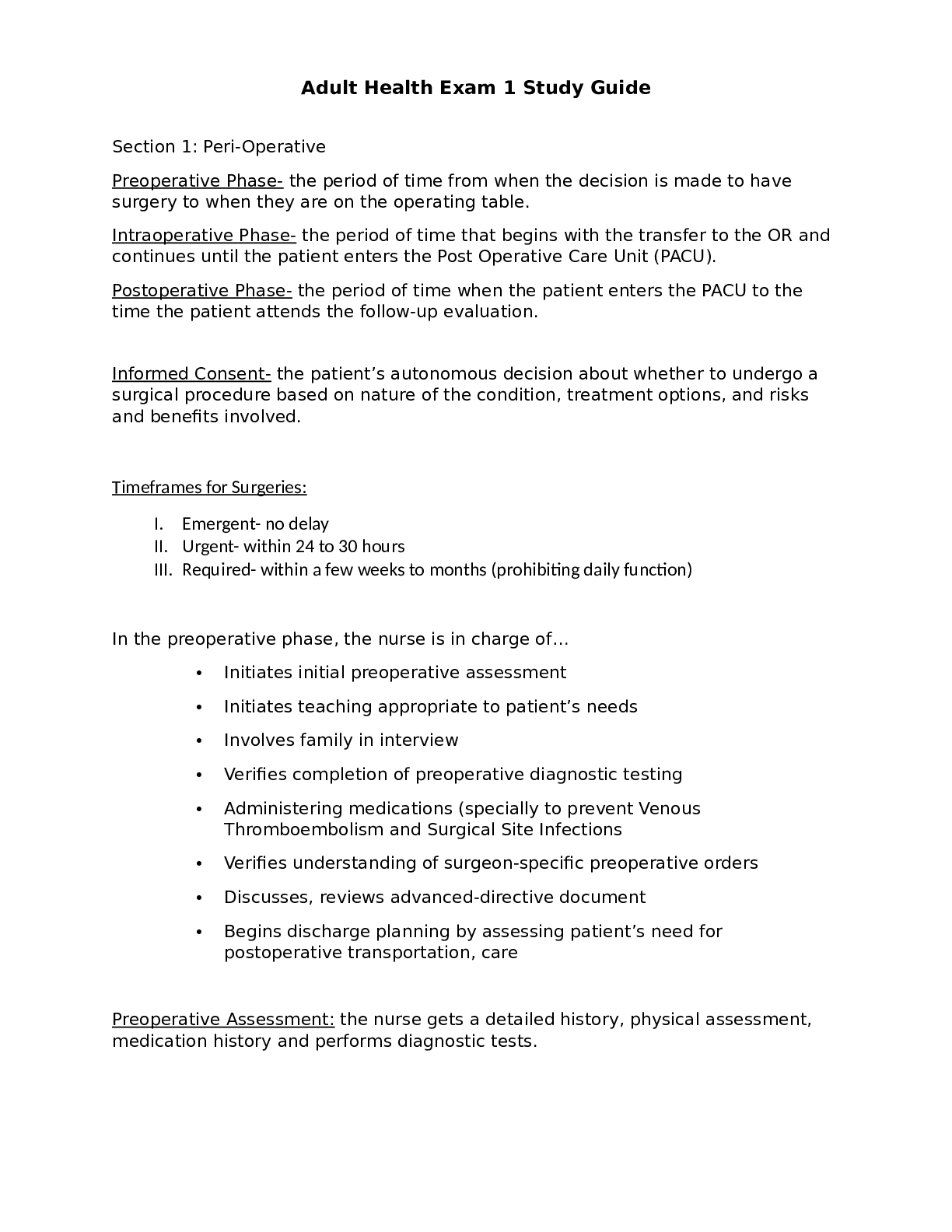

.png)

